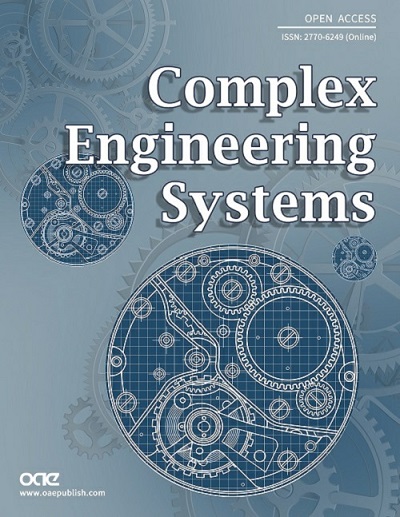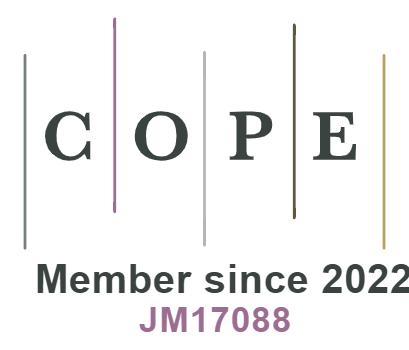Dynamic event-triggered practical stabilization of random suspension system based on immersion and invariance
Abstract
This article investigates the practical stabilization problem of random quarter-car active suspension systems. An adaptive dynamic event-trigger strategy is proposed to stabilize the states of vehicle suspension in response to system uncertainty and controller area network resource constraints. Moreover, the model of random active suspension systems is extended to the general random robot systems; the controller is developed with the aid of a double dynamic surface filter, immersion and invariance (I&I) techniques, and event-triggered mechanisms. The results show that the semi-global stability of error systems is achieved, and there are some improvements in triggering times and adaptive estimation performance under the control framework. Finally, simulation comparison results are provided to prove the advantages of the proposed scheme.
Keywords
1. INTRODUCTION
With the rapid development of science and technology, vehicles have become a commonly used means of transportation. The suspension system is a force transmission connection device between the vehicle body and the wheels. Due to their ability to effectively alleviate impacts and body vibrations caused by uneven road surfaces to ensure ride comfort, the suspension systems have received great attention from researchers [1,2]. As a type of suspension system, active suspension systems (ASS) were often used to improve vehicle damping characteristics. Subsequently, some novel controllers were designed to achieve the expected performance of ASS, such as robust sampled-data
Due to the lack of accurate identification of model parameters and partial measurement of the system states, nonlinear adaptive control must cope with high levels of uncertainty. For ASS with uncertain parameters, adaptive schemes are proposed in [8,11,12]. As is well known, the two basic methods for dealing with nonlinearity are certain equivalence (CE) [13] and immersion and invariance (I&I) [14]. In principle, CE is to design Lyapunov functions for the error dynamic equation and obtain the update law of parameter estimation, which takes the form of an error nonlinear integrator, while I&I indirectly introduced unknown parameters into the estimation with the aid of state correction terms, which means incorporating system dynamics into lower order expected behavior to achieve control objectives [15]. Whereafter, the I&I technology has been verified in practical robot systems, such as quadrotors [16–18], balls, beam systems [19], and so on. In addition, as a typical nonlinear system, ASS inevitably suffers from the problem of explosion of terms caused by the analytic calculation on the command derivative of stabilizing function. To overcome this difficulty, the command derivative was approximated by a dynamic surface filter (DSF) [20], and then a command filter with compensated dynamics was proposed by [21], which revealed the relation of command filter control with traditional backstepping approaches. This technology is further applied to theoretical development [22–24] and practical systems [25–27].
With the continuous deepening of research on network systems and electronic control components, saving limited bandwidth resources has become an important topic. Usually, it is required that the sensors, controllers, and actuators of the suspension system can continuously obtain information from each other. It is worth mentioning that event-triggered control (ETC) is an effective way to reduce the communication burden on the controller area network [28] proposed a new adaptive event-triggered tracking scheme that can not only offset severe uncertainty but also ensure any pre-set tracking accuracy. Nowadays, a number of results have been presented on ASS under the ETC condition [29–31].
In addition, the event-triggered communication mechanism is widely used in multi-agent systems [32–35]. Only when the event-triggering conditions are satisfied the information of each agent will propagate to adjacent agents, greatly reducing the communication burden [34] proposed two different position controllers to handle the time-varying formation problem of multi-rotor systems based on an event-triggered integral sliding mode method. Further consideration still needs to be given to the collaborative control problem of unmanned aerial vehicle systems in the case of hybrid active interactions between humans [36]. This is a question worth exploring, once again discussing the suspension system.
In real life, the impact of rough roads on vehicles cannot be ignored. In order to improve passenger comfort, the suspension system must absorb road vibrations and prevent them from being transmitted to the vehicle body. Therefore, there are sufficient reasons to consider the control of random nonlinear ASS on rough road surfaces. The random model of ASS was given in [37]; however, it does not consider the issues of unknown parameters and reduced system signal transmission frequency. Motivated by the aforementioned papers, the dynamic event-triggered practical stabilization of uncertain random quarter-car ASS is devoted and even extended to general random nonlinear systems to deal with a class of robot control problems.
The main contributions of this paper are as follows: First, the application of I&I techniques and dynamic event-trigger mechanisms (DETM) to random nonlinear systems has achieved practical stabilization of random ASS.
Compared with [11], it is not necessary to invoke CE and Lyapunov functions. I&I indirectly introduced unknown parameters into the estimation by state correction terms, avoiding the coupling between estimation law and error terms from the perspective of nonlinear regulation, which, to some extent, improves estimation performance.
Second, the double DSF proposed in this paper removes the compensation signals and achieves awesome properties calculated by double integration. Another advantage of DSF is that compared to [38,39], it eliminates the boundedness assumption of prior filter errors and provides a reasonable stability analysis process.
The paper is divided into six parts. The first section is the introduction of relevant background knowledge of the research content. In the second section, the random suspension system and problem formulation are presented. The adaptive dynamic event-trigger controller is designed in the third section, and the performance analysis is discussed in the fourth section. The simulation results are provided in the fifth section, and the last section is a conclusion.
Notations:
2. MODEL DESCRIPTION AND PROBLEM SETUP
2.1. Random active suspension model
As presented in Figure 1, the quarter-car active suspension in a random environment is shown in this paper. The masses of the wheel and car body are
Borrowed from [37], the random model of ASS by the aid of Lagrangian principles and relative motions is constructed as
Let
Then, the random model (1) with an unknown damping coefficient is shown as
where
2.2. Problem setup
In response to the problems of unknown parameters and high communication requirements in traditional robot control systems, the objective of this paper is to design an adaptive DETM for random suspension systems (2) to achieve semi-global practical stabilization. In order to solve a type of control problem similar to a random suspension system, system (2) is organized into the following general forms of random systems for controller design, that is
where
Assumption 1 For any
Assumption 2 There exist constants
The purpose of introducing (4) is to consider that the disturbance energy is bounded in practical situations [40]. In order to better select parameters in stability analysis, (5) was cited, and similar considerations were also used in coordinated control systems [41]. To facilitate the controller design, the following inequalities are presented.
Lemma 1[32] For any vectors
Lemma 2[10] For all
3. ADAPTIVE EVENT-TRIGGERED CONTROLLER DESIGN
Compared with traditional adaptive laws, adaptive techniques based on I&I do not require linear parameterization conditions or CE and can better compensate for parameter uncertainty. In order to avoid explosive terms generated by recursive processes, inspired by [20,21], a novel double DSF is proposed:
with filter time constant
where
where
Step 1. From (3), (7), and (8), the dynamic of
In light of (3) and (8), one obtains
Select the fictitious control and adaptive law as
where
Which used Young inequality (see Lemma 1) and (5):
Step i.
where
Step n. Construct the Lyapunov function
where
Naturally, the adaptive law is given as
where
where
With the aid of (17), it can come to a conclusion that
where
where
note that the item based on Lemma 2 satisfies
and
Remark 1 The DETM (17) adjusts the update interval and control accuracy based on a control signal. Compared with the static event-triggered mechanism (SETM), the proposed controller has a dynamically adjusted trigger threshold and a shorter execution interval [42]. Due to the presence of the internal dynamic variable
4. PERFORMANCE ANALYSIS
The stability properties of the random nonlinear system (3) with adaptive DETM controllers (17) and DSF techniques are summarized in this section. Let us make some preparations for stability analysis. For
Denote
Unfolding
where
For the
which satisfies
For any constant
where
where
where
Let
where
The error system is summarized as follows
Based on the above argument, we intend to summarize the following results.
Theorem 1 Consider the random ASS system described by (3), under Assumption 1 and Assumption 2, with fictitious control law and adaptive update law in (9), (12), (16), the event-triggering rule (17), satisfying parameter requirements (27), the closed-loop system (29) has the following performance:
(1). the system (29) is semi-globally noise to state practically stable in probability (SGNSpS-P);
(2). all signals in (29) are bounded in probability;
(3). the desired performance of the stabilization error
(4). the inter-execution intervals
Proof It is clear that the closed-loop system is SGNSpES-P along (24) and (28), which means that
Regarding (28), with the aid of Gronwall inequality, we arrive at
for any
In the following, it needs to be demonstrated that the designed trigger control can avoid the Zeno phenomenon. The derivative of (19) becomes
which is bounded in the compact set
Remark 2 A command filter proposed in [21] is replaced with a double DSF (6) in this paper. This results in a simpler form of Lyapunov functions used in
5. SIMULATION
For the random ASS (1), following the previous DETM controller design with I&I in section 3, we can arrive at
where
the dynamic of (31), along with the design of controllers (30) and the handling of inequalities, leads to
where
Theorem 2 For random suspension systems (1) with control law (30) satisfying parameter requirements (32), the closed-loop system is SGNSpS-P; the stabilization error
Following Theorem 1, the previous properties can be obtained directly; the specific proof process was omitted.
Next, the practical stabilization problem is simulated to demonstrate the merit of the obtained feedback controller (30). Choose system parameters as
Followed by section Ⅵ of [40], the disturbances
In addition, the parameters in controller are
The continuous control
Below, we will conduct a simulation comparison between DETM and SETM under I&I and DSF. As shown in Figure 5, the relative threshold triggering strategy in [43,44] is demonstrated, that is
where
In order to illustrate the difference in adaptive effects between I&I and CE under DETM and DSF, following [11,12], an adaptive law is designed as
where
6. CONCLUSION
In this work, an adaptive ETC method with double DSF has been presented for random quarter-car active suspension models. Compared with static event-trigger, the designed dynamic event-triggered strategy can effectively reduce communication burden and save network resources. Not only automotive suspension systems but also the research on practical stabilization problems of general random nonlinear systems have also been provided. More importantly, for general random nonlinear systems, tracking controllers can also be designed to achieve the tracking goals. Future work may include vehicle network control issues under network attacks or adaptive ETC issues for stochastic under-actuated systems. The safety issues of multi-agent under-actuated systems, such as unmanned aerial vehicles and surface vessels, are also worth further investigation.
DECLARATIONS
Authors’ contributions
Made significant contributions to the conception: Wu Z
Made significant contributions to the writing: Yang C
Made significant contributions to the revision: Feng L
Availability of data and materials
Not applicable.
Financial support and sponsorship
This work is supported by the National Science Natural Foundation of China under Grant (No. 62073075).
Conflicts of interest
All authors declared that there are no conflicts of interest.
Consent for publication
Not applicable.
Ethical approval and consent to participate
Not applicable.
Copyright
© The Author(s) 2023.
REFERENCES
1. Brezas P, Smith MC. Linear quadratic optimal and risk-sensitive control for vehicle active suspensions. IEEE Trans Control Syst Technol 2013;22:543-56.
2. Xu H, Zhao Y, Pi W, Wang Q, Lin F, Zhang C. Integrated control of active front wheel steering and active suspension based on differential flatness and nonlinear disturbance observer. IEEE Trans Veh Technol 2022;71:4813-24.
3. Gao H, Sun W, Shi P. Robust sampled-data H∞ control for vehicle active suspension systems. IEEE Trans Control Syst Technol 2010;18:238-45.
4. Lian RJ. Enhanced adaptive self-organizing fuzzy sliding-mode controller for active suspension systems. IEEE Trans Ind Electron 2012;60:958-68.
5. Sun W, Zhao Z, Gao H. Saturated adaptive robust control for active suspension systems. IEEE Trans Ind Electron 2013;60:3889-96.
6. Liu B, Saif M, Fan H. Adaptive fault tolerant control of a half-car active suspension systems subject to random actuator failures. IEEE/ASME Trans Mechatron 2016;21:2847-57.
7. Liu L, Zhu C, Liu YJ, Tong S. Adaptive finite-time neural constrained control for nonlinear active suspension systems based on the command filter. IEEE Trans Artif Intell 2021;3:218-27.
8. Huang YB, Na J, Wu X, Liu X, Guo Y. Adaptive control of nonlinear uncertain active suspension systems with prescribed performance. ISA Trans 2014;54:145-55.
9. Pang H, Zhang X, Xu Z. Adaptive backstepping-based tracking control design for nonlinear active suspension system with parameter uncertainties and safety constraints. ISA Trans 2019;88:23-36.
10. Zeng Q, Zhao J. Dynamic event-triggered-based adaptive finite-time neural control for active suspension systems with displacement constraint. IEEE Trans Neural Netw Learn Syst 2022:1-11.
11. Na J, Huang Y, Wu X, Gao G, Herrmann G, Jiang JZ. Active adaptive estimation and control for vehicle suspensions with prescribed performance. IEEE Trans Control Syst Technol 2017;26:2063-77.
12. Zeng Q, Liu YJ, Liu L. Adaptive vehicle stability control of half-car active suspension systems with partial performance constraints. IEEE Trans Syst Man Cybern Syst 2021;51:1704-14.
13. Ioannou PA, Sun J. Robust adaptive control. NJ: Prentice-Hall; 1996. Available from: https://viterbi-web.usc.edu/ioannou/RobustAdaptiveBook95pdf/Robust_Adaptive_Control.pdf [Last accessed on 16 Oct 2023].
14. Astolfi A, Ortega R. Immersion and invariance: a new tool for stabilization and adaptive control of nonlinear systems. IEEE Trans Autom Control 2003;48:590-606.
15. Astolfi A, Karagiannis D, Ortega R. Nonlinear and adaptive control with applications. London: Springer Publishing Company; 2007. Available from: https://link.springer.com/book/10.1007/978-1-84800-066-7 [Last accessed on 16 Oct 2023].
16. Hu J, Zhang H. Immersion and invariance based command-filtered adaptive backstepping control of VTOL vehicles. Automatica 2013;49:2160-67.
17. Zhao B, Xian B, Zhang Y, Zhang X. Nonlinear robust adaptive tracking control of a quadrotor uav via immersion and invariance methodology. IEEE Trans Ind Electron 2015;62:2891-902.
18. Yong K, Chen M, Wu Q. Immersion and invariance-based integratedguidance and control for unmanned aerial vehicle path following. Int J Syst Sci 2019;50:1052-68.
19. Rapp P, Sawodny O, Tarín C. An immersion and invariance based speed and rotation angle observer for the ball and beam system. Am Control Conf 2013:1069-75.
20. Swaroop D, Hedrick JK, Yip PP, Gerdes JC. Dynamic surface control for a class of nonlinear systems. IEEE Trans Autom Control 2000;45:1893-99.
21. Farrell JA, Polycarpou M, Sharma M, Dong W. Command filtered backstepping. IEEE Transactions on Autom Control 2009;54:1391-95.
22. Du JL, Hu X, Krstić M, Sun YQ. Robust dynamic positioning of ships with disturbances under input saturation. Automatica 2016;73:207-14.
23. Liu C, Chen CLP, Zou ZJ, Li TS. Adaptive NN-DSC control design for path following of underactuated surface vessels with input saturation. Neurocomputing 2017;267:466-74.
24. Yang Y, Tang L, Zou W, Ding DW. Robust adaptive control of uncertain nonlinear systems with unmodeled dynamics using command filter. Int J Robust Nonlinear Control 2021;31:7764-87.
25. Aboudonia A, El-Badawy A, Rashad R. Active anti-disturbance control of a quadrotor unmanned aerial vehicle using the command-filtering backstepping approach. Nonlinear Dyn 2017;90:581-97.
26. Pan Y, Wang H, Li X, Yu H. Adaptive command-filtered backstepping control of robot arms with compliant actuators. IEEE Trans Control Syst Technol 2018;26:1149-56.
27. Wang J, Wang C, Wei Y, Zhang C. Command filter based adaptive neural trajectory tracking control of an underactuated underwater vehicle in three-dimensional space. Ocean Eng 2019;180:175-86.
28. Huang Y, Liu Y. Practical tracking via adaptive event-triggered feedback for uncertain nonlinear systems. IEEE Trans Auto Control 2019;64:3920-27.
29. Li H, Zhang Z, Yan H, Xie X. Adaptive event-triggered fuzzy control for uncertain active suspension systems. IEEE Trans Cybern 2018;49:4388-97.
30. Yang C, Xia J, Park JH, Shen H, Wang J. Sliding mode control for uncertain active vehicle suspension systems: an event-triggered H∞ control scheme. Nonlinear Dyn 2021;103:3209-21.
31. Zeng Q, Zhao J. Event-triggered adaptive finite-time control for active suspension systems with prescribed performance. IEEE Trans Ind Inform 2021;18:7761-69.
32. Wang D, Gupta V, Wang W. An event-triggered protocol for distributed optimal coordination of double-integrator multi-agent systems. Neurocomputing 2018;319:34-41.
33. Yu H, Chen T. A new Zeno-free event-triggered scheme for robust distributed optimal coordination. Automatica 2021;129:109639.
34. Hou Z, Lu P. Event-triggered integral sliding mode formation control for multiple quadrotor UAVs with unknown disturbances. Franklin Open 2022;1:17-29.
35. Zhang G, Liu S, Zhang X. Adaptive distributed fault-tolerant control for underactuated surface vehicles with bridge-to-bridge event-triggered mechanism. Ocean Eng 2022;262:112205.
36. Chen L, Liang H, Pan Y, Li T. Human-in-the-loop consensus tracking control for UAV systems via an improved prescribed performance approach. IEEE Trans Aerosp Electron Syst 2023; doi: 10.1109/TAES.2023.3304283.
37. Cui M, Geng L, Wu Z. Random modeling and control of nonlinear active suspension. Math Probl Eng 2017;2017:1-8.
38. Zhao L, Yu J, Shi P. Command filtered backstepping-based attitude containment control for spacecraft formation. IEEE Trans Syst Man Cybern Syst 2019;51:1278-87.
39. Zhang J, Xia J, Sun W, Wang Z, Shen H. Command filter-based finite-time adaptive fuzzy control for nonlinear systems with uncertain disturbance. J Franklin Inst 2019;356:11270-84.
40. Wu Z. Stability criteria of random nonlinear systems and their applications. IEEE Trans Autom Control 2015;60:1038-49.
41. Shang Y. Fixed-time group consensus for multi-agent systems with non-linear dynamics and uncertainties. IET Control Appl 2018;12:395-404.
42. Girard A. Dynamic triggering mechanisms for event-triggered control. IEEE Trans Autom Control 2014;60:1992-7.
43. Zhang CH, Yang GH. Event-triggered adaptive output feedback control for a class of uncertain nonlinear systems with actuator failures. IEEE Trans Cybern 2018;51:201-10.
Cite This Article
How to Cite
Yang, C.; Wu Z.; Feng L. Dynamic event-triggered practical stabilization of random suspension system based on immersion and invariance. Complex Eng. Syst. 2023, 3, 17. http://dx.doi.org/10.20517/ces.2023.25
Download Citation
Export Citation File:
Type of Import
Tips on Downloading Citation
Citation Manager File Format
Type of Import
Direct Import: When the Direct Import option is selected (the default state), a dialogue box will give you the option to Save or Open the downloaded citation data. Choosing Open will either launch your citation manager or give you a choice of applications with which to use the metadata. The Save option saves the file locally for later use.
Indirect Import: When the Indirect Import option is selected, the metadata is displayed and may be copied and pasted as needed.
About This Article
Copyright
Data & Comments
Data





















Comments
Comments must be written in English. Spam, offensive content, impersonation, and private information will not be permitted. If any comment is reported and identified as inappropriate content by OAE staff, the comment will be removed without notice. If you have any queries or need any help, please contact us at support@oaepublish.com.